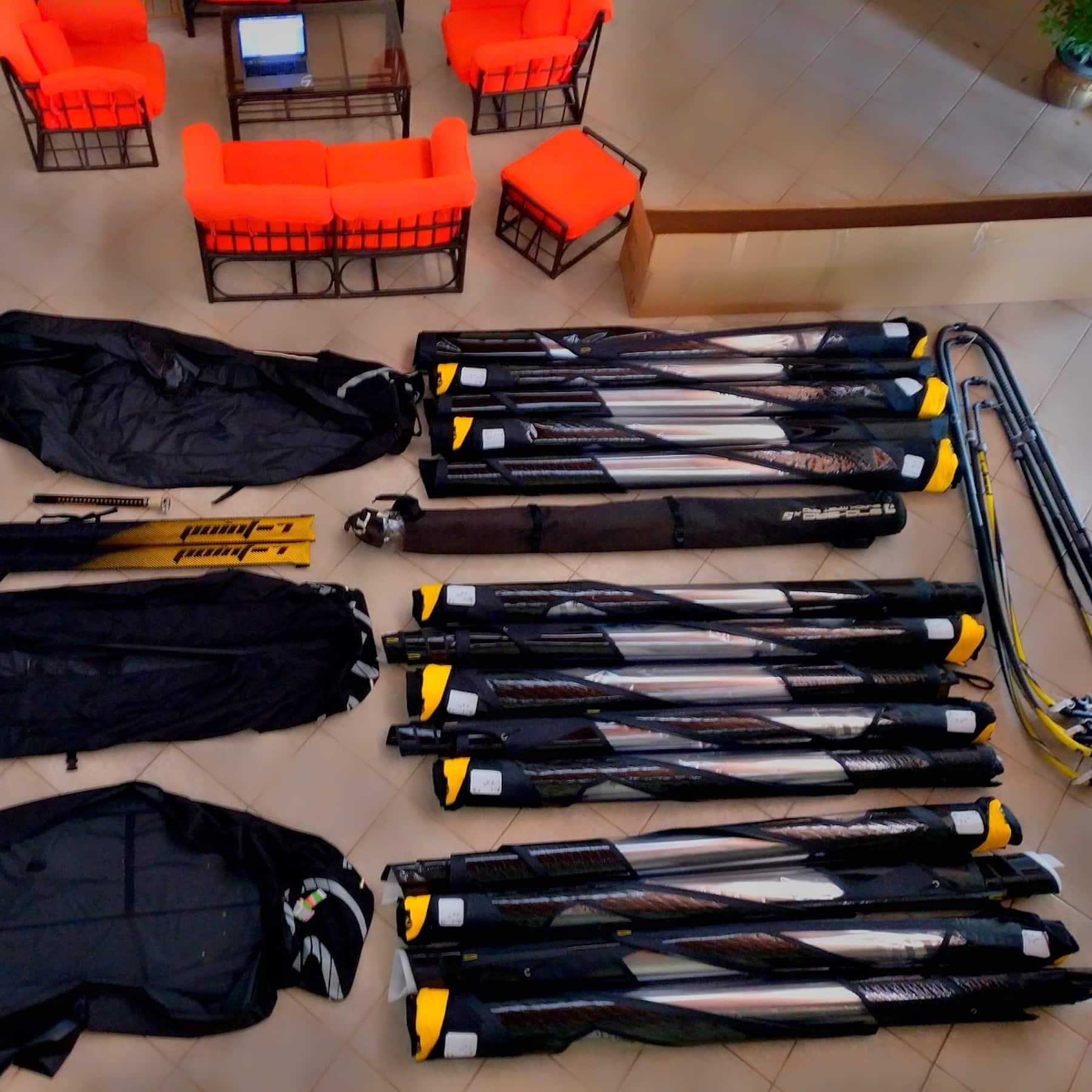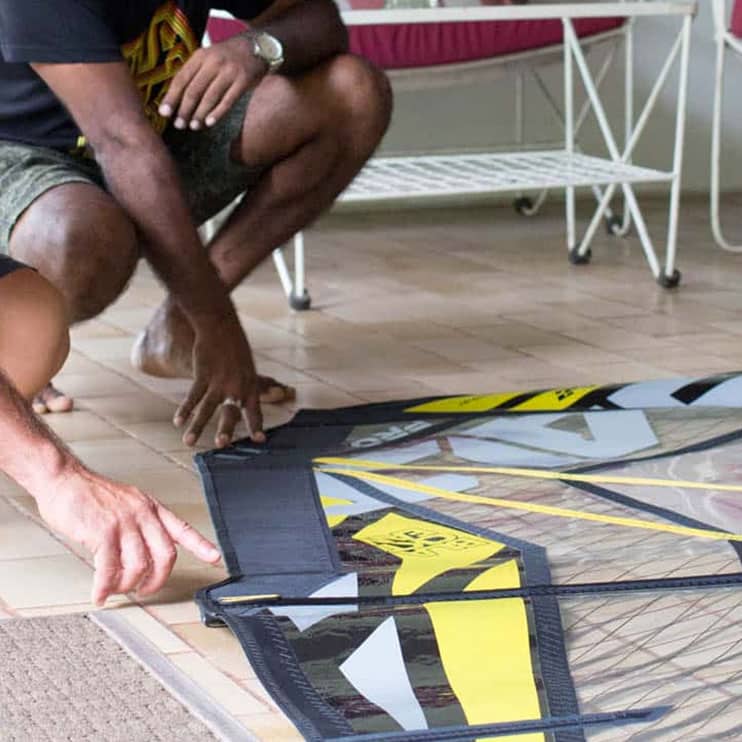It’s often that sails which are presented on magazines are existing only as a graphical drawing. The real sail does not yet exist. Just as new car designs are presented. From seeing the image only, the beach talk is a spreading news: ‘Have you seen the new sail, it looks like it’s more powerful, it has a longer boom, …yes I like it, I heard it’s very light. Just like when unrolling a new sail on the beach, everyone gathers around to comment, specially in no wind days. ‘The sail has good reinforcements’… a lot of comments which are very interesting, but the only thing that could eventually be really commented are printed sizes on the tack and structure. Sometimes the sail could also look the same, but there is so much work behind each millimetre, that it will make the sail different on the water. Yes, millimetres can make a sail feel good or bad! Till the sail does not hit the water, it’s hard to understand how it really performs.

A brand-new sail which is being un rolled in front of the buyer’s feet, has actually been rigged and tested a lot of times from the sail brand test team. Which process has the proto been through, to actually become the final production sail? the beach talk of the day, the product that will bring extreme fun to our windsurfing?
Generally, the development mainly starts from the client requests or rider request depending on the sail model. That is why different sail lines exist for 1 single discipline, giving different choices, according to the technical level of the windsurfer, power, spot where he will mainly use the sail, and board he will use with it. On top of this routine development, there are some longer time projects, which are made to bring innovation to windsurfing and a new challenge for the clients.
The development is continuous. The only enemy which blocks it is the date that the sail will need to enter the production. Once they are in production, the next day the development team, is already testing and designing the sail for the year after. Practically when the new sails are available, the ones for the year after are almost ready. Generally, the sails are developed in different periods of the year according to the type of sail.

Generally, the test team would never feel like putting in production a sail, as there are always new things to try and improve. It’s a good motivation which bring the windsurfing industry to have a non-stop research and development business, to guarantee always new products and performance each year.
The main testing period for the race sails is late summer. You wait to receive feedback from the riders racing, and results. Once the sail has been on the race course the picture is clear on what might need to be improved. From there the deadline is the middle of December. For the wave sails the main testing time is the winter. The windiest period. Starting in November till April. As the race sails are finished, the freeride, free-race are starting their development till May. Having development breaks between the different sail lines is very useful. This allows to lose the feeling of a sail line, so when you get back after a while you really feel what is there to be changed, or not to be changed!
Starting with the new year development.
The first step is to sit down between the marketing\sales director, sail designer, testers, riders and comments received from the clients. A real brain storm is brought out underlining what to change, what not to change, and what could be missing in the line. Therefore, the highlights are mainly on whether to make extra sizes, where to change the performance of the sails, boom lengths, materials, colours, tensions, battens…. It’s a very important phase for the sail designer to understand more where to start putting his hands on his software and start his modifies. Before that there were of course lots of hours with the products on the water.

To choose the name of a sail line could be already a difficult choice. Till the sail is not seen on the water it’s hard to find its name. Often the ideas come when you see them on the water.
Getting Ready!
For each size and line, the first detail to choose is which mast will need the sail to be cut on. That’s why it’s having the right mast is an important feature to receive a 100% integrated rig efficiency. According to the feedback all details are available for the sail designer to start making the first changes.
Once the outline has been developed by the sail designer, the graphic designer starts putting down the new look of the sails choosing different colours and materials. The choice of the material is extremely important. They can give the top performance and dynamics to the sail. They need to be light, durable, anti-uv, beautiful and need to be placed in the right spots to secure the sail structure. It’s important that the sail designer keeps track of the graphics scheme to advise the graphic designer what is possible to do and better to avoid having the sail built as close as bomb proof. The graphics need to adapt on each sail line as it’s not just into scale the changes to be made, as clew and boom opening are fixed points. Therefore, the test team need to test each size in it’s range and the sail designer change the sail characteristic according to the intensity of wind it will be used in.

Once the sails have been designed on the computer files, the sail is ready to be cut by the plotters. Some brands are cutting the protos in their development centre, but other, like in our case, are getting the protos cut by the same company which will build the production sails. This second case is excellent to check if there would be any problems in the production product and to make sure that the prototype tested will result to be exactly the same as the production. A great check procedure to make sure that the sail is well reinforced, the production has no problem to integrate any innovation on the product, the colour combinations and prints are the desired ones… A real medical check up!
Once the files are sent to the production company mainly in China or Srilanka, it will be 2 weeks the time to receive the prototypes. If a sail designer would need to cut a sail himself, it would take at least 3-5 days per size. During the 2-week period the production company is able to supply over 30 prototypes and with the possibility to have the quality checked as explained above.
Before all this, the management is organising the material to be used in the production sails. It’s hard work as the exclusive material, colours… all need to be ordered some months in advance and a great planning needs to be done. Is not always simple to make all this fit into good timing. The material samples are tested on the different prototypes to check the durability and dynamic effect on the performance of the sail. Most of the sail material is made in Japan and US. Coloured monofilm can be 5 times more expensive then the transparent monofilm but allows to resist much better to UV-Rays. This is why on our sails we do use only this material everywhere allowing the sail to last longer in the sun.
Every brand has their trade mark regarding on water performance. So once the sails arrive, the testers need to get on the water and remember to make those trade marks fit to each line. In our case we try to offer powerful sails which do release a lot of power when the wind picks up. This to offer a great wind range to the sails, and therefore the chance to invest in less sizes on the quiver. To help this the sails need to be very balanced, light while sailing and slightly soft for the extra comfort. In each sail line different characteristics are thereafter implemented to be able to hit the target of what the client is looking for in that sail typology.
The arrival of the prototypes.
In Point-7 we are always lucky. As the sails arrive the right wind is there for getting on the water and testing them. As we open the boxes with the new sails inside the excitement is big! Everyone is quite as if it would be a kid opening a gift on Christmas. It’s always strong to see the result of a lot of team work put together. The graphics designer tries to pick up what could look better seen in real, and the sail designer can’t wait to see the sail rigged…. the tester can’t wait to take the sail out from their hands and feel them in the wind, but in our company everyone is windsurfing actively, so everyone just want to get on the water with them!! On the first test day it’s always a bit of panic happening as everyone feels that all the sail need to get on the water. It’s like a big rush which needs to be cooled down!

After un packing the sails, the first step is anyhow to rig each size to check if everything is done as to project. The mast, boom lengths are taken, and the graphics designer takes pictures to compare to his software art work.
Testing on water
Our sail loft is 100m from water and wind. Sails and boards are brought to the beach, and each testing day is a long day in the wetsuit. New sail against old sail. That is the rule to go ahead. After 200m it’s already clear at what level the new sail is. After few runs on the new sails, new trims are tested till the correct one is found. Once this is done, the testers switch sails and repeat the comparison. The masts are switched on the sails to make sure that all outside factors which could give differences are deleted. While testing the testers do not share their opinion. It’s all written down on paper, in order that the feelings on the equipment are not being biased. In our case, our sail designer, Andrea Cucchi, is on the water even more than our riders for the testing of gear and is therefore testing personally. He can push the products to extreme, and his racing results confirm this. It’s a pretty good advantage to have this opportunity. This way the riders the clients can speak a very easy language for Andrea to understand their needs and their wishes.

Everything tested gets written down. Visual changes, positive and negative comments and all possible feedback. Normally when comparing the feedback of each tester, they all come to the same conclusion. From there Andrea writes down what needs to be modified, and the sails are immediately washed and dried out from salty water and sand. As testing day is over, and over 20 rigs have been rigged in a day, even 8-10 hours in the wetsuits, Andrea and his team starts modifying the sails even till early in the morning from late evening. Specially if the forecast for the next day is good.
Once all the sails are modified to work as desired, then they enter a second phase of testing. They start to be tested out of their wind range, and board target. We bring cambered sails into big waves to get washed, wave sails on flat water to feel them on freeride boards. The sail from the different lines are tested against each other to understand better also for us the differences, and if we can learn new things which can be implemented from the different sail lines. We do test our sails with different masts and mast carbon % content. It’s very important work for us to do, also to then be able to advise at best our clients, their best sail choice through our customer care service. So once the client is interested in a sail size and model, according to the explanation on where he is sailing, the board he is using, weight, and other information he will give us, we can advice him at best what would fit him. It’s very appreciated till now by our clients.
As a lot of chances are made to one sail size, then the sail designer decides to make a new file and send it to the sail producer, in order to have a new sail done with all implemented changes. This procedure is done also to all the sizes for double checking before entering production. Once the production time gets closer, the final check up is done to the entire range, the final sizes of the boom and mast are taken. All the little details are taken under examination to be sure that the work is perfect.
While all this work is done on the sail, on the other hand also the mast producer tries to bring in innovation to the mast which would fit the request of the testers, in order to bring a higher end performance integrated rig.
Production!
As the tests are ended, a trip to the sail manufacturer is a must. This is to bring a better-quality check, make sure that there are no problems during the production. Once the production is done, the sail designer and its team are already taking back new prototypes ì….and it’s just a real non-stop development!
Some sail testing can even take one year. Some sails are shipped out to the different team riders to be tested in very different conditions and different windsurfing styles. This to give a good chance to the product to express itself in every condition, in every style. A chance to hammer the product to check its durability and correct any weak points. A real chance to get to know what you offer to the market: a real development, a real tested quality product.
The worse enemy to the development? The deadlines to get the photo-shooting done for catalogues and websites, the costs for the price lists, and be ready for the presentation at the first exhibitions. Therefore, organisation in development is very important. In Point-7, if it does not get tested and proved by our squad, and the deadline is around the corner, it does not enter production. Therefore, any of our products available are guaranteed tested product and we will be happy with our team to advice the best choice.









